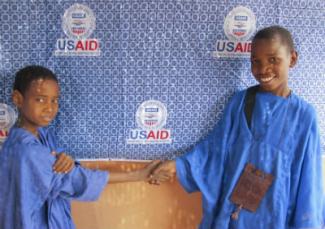In 2011, USAID celebrated 50 years of presence and partnership with Mali, a landlocked country that is one of world’s poorest. USAID worked with the people of Mali to achieve major development gains, particularly in the fields of health, agriculture, and education. In 1960, one out of every two children died before his fifth birthday; today that number is down to one child in five -- still much too high, but a major improvement thanks in large part to USAID’s support. Because agriculture and livestock provide employment to approximately 80% of the active labor force and account for 42% of the gross domestic product, USAID funded farmer cooperatives that developed improved, high-yielding and pest-resistant seeds, as well as irrigation methods to help Mali meet increasing food demand. Between 2000 and 2010, main crop production increased 150%, thanks to investments like these.
USAID also helped Malians to establish a community school system and interactive radio instruction to increase access to and the quality of education. Significant development gains over the past decades earned Mali the Millennium Challenge Corporation Compact and four presidential development initiatives - the President’s Malaria Initiative; Feed the Future; the Global Health Initiative; and the Global Climate Change Initiative.
Following peaceful democratic elections and the inauguration of President Keita [KAY-tah] on September 4, 2013 the USAID mission in Mali began working with the Government of Mali to resume foreign assistance more broadly, including education and governance activities that had been suspended since the coup, while also adapting continued activities to the newly-elected Government of Mali priorities as necessary.

